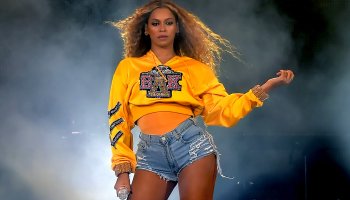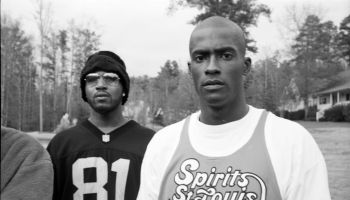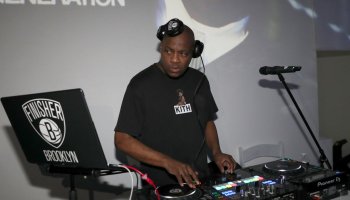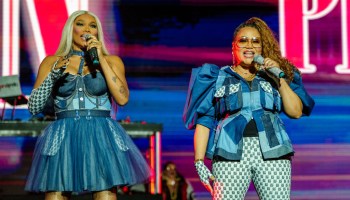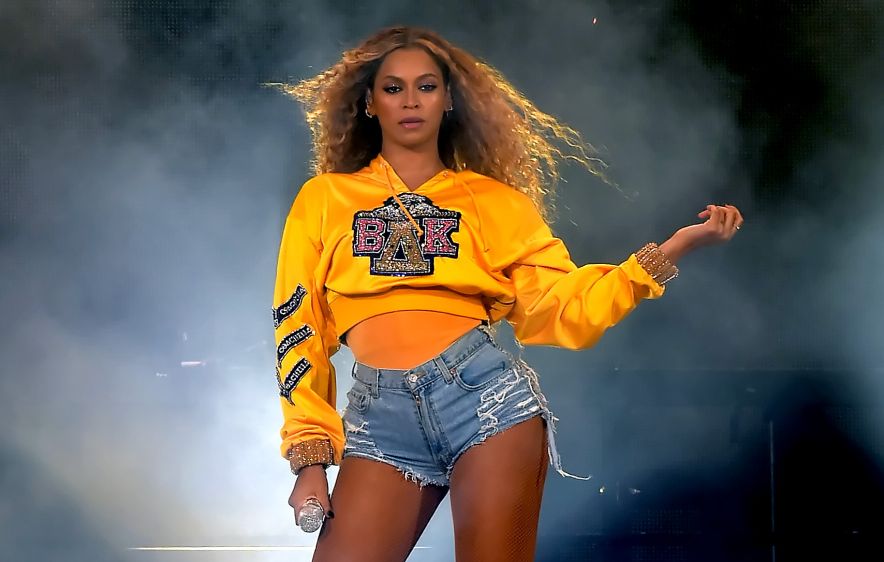
Source: Kevin Winter / Getty
“To me, we are the most beautiful creatures in the world, Black people.”—Nina Simone.
When Beyoncé dropped “Formation” back in 2016, I knew that something about her had changed. Or maybe it didn’t. Perhaps that “newly perceived” pro-Blackness had always been there, she just wasn’t “allowed” to show it the world.
There’s a moment in the new Netflix documentary ‘Homecoming’ that may reference a time when she didn’t free to speak her truth as an artist.
“As a Black woman, I used to feel like the world wanted me to stay in my little box. And black women often feel underestimated,” she says.
Well, if anything is clear now, it’s that Queen Bey is emancipated from the restraints that were once placed on her. Gone are the days of Bey being safe and appeasing her white fans, these same fans that could easily consume her R&B music in one breath and deny her Blackness in another.
But regardless of Coachella’s overwhelming whiteness and Bey being the first Black woman to headline the concert series, her Blackety Blackness and the aesthetic and power associated with HBCUs were front and center. She even sang our anthem; James Weldon Johnson’s “Lift Every Voice and Sing.”
“Instead of me pulling out my flower crown,” Beyoncé stressed, “it was important that I brought our culture to Coachella. Creating something that will live beyond me, that will make people feel open and like they’re watching magic.”
See, on that stage, Beyoncé was home, reliving the old days when her young “country ass” would watch the “battle of the bands” and how she yearned to graduate from an HBCU like her father, before her others passions took her in a different direction.
But most importantly, at the age of 37, it feels as if she’s come back home to herself. Paving a new path, crafting a different narrative and meaning, not just in her music, but also for herself. So if “Formation” was the inciting incident and “Lemonade” was the rising action, #Beychella is the beautiful and unapologetic climax of this story.
Now for those that wonder why revisiting “Homecoming” is so necessary, the answer is simple: Beyoncé didn’t just do this for her and Blue, did this for the culture.
She did this for us.
“I wanted us to be proud of not only the show, but the process. … It was important to me that everyone who had never seen themselves represented felt like they were on that stage with us.”
That, and “Homecoming” digs deeper showcasing the tireless work and intense planning that went into her 2-hour cultural masterpiece.
Just think: That one performance translated into eight grueling months of planning and rehearsals. Not to mention, all the precious time she took away from mothering, bonding and breastfeeding her baby twins, Rumi and Sir. But that was the sacrifice she was willing to make in order to give Black folks some much-needed joy.
When you see how persistent Bey was in “building things from the ground up,” we see how this joyful perfection was constructed. Not only did she handpick every dancer herself, she “picked every light, the fabric of the steps, the height of the pyramid, the shape of the pyramid,” reminding us that every “tiny detail had an intention.” No wonder she described herself as “super specific,” but you have to be when you have a vision this grand.
While we see Bey be the creative beast at work, we also get glimpses of her being a mere mortal like the rest of us.
In one scene, which I’m glad didn’t get edited out; she’s expressing her frustration to a room of lot of men about how her notes for the show were not being applied, repeatedly. Remember: Bey may be a bawse and signing the checks, but she’s also a #BlackWomanAtWork, which can also mean being overlooked and ignored.
In addition, throughout the film she speaks openly and freely about the toll her “unexpected: pregnancy took on her body and the journey it took for her to get to a place where she could perform, and perform to her expected incredibly high standard.
“My body went through more than I knew it could. I was 218 pounds the day I gave birth,” she confides, adding, “I had an extremely difficult pregnancy. I had high blood pressure. I developed toxemia, preeclampsia.”
Fearing for the life of one of her twins she had an emergency C-section, only months later to find herself on that soundstage, pushing herself further than she’d ever done. In one scene, we see her like we’ve never seen the season performer before: Curled up on the floor, clutching at some spasming muscles in her belly, looking defeated.
Yet, somehow, she dug deep and persisted.
But the most transformative takeaways from “Homecoming” wasn’t Beyonce’s physical journey, her incredible work ethic or her overall greatness. It’s that her show was a celebration of every last Black body that performed on stage. An act I would argue is overtly political, especially when you think about how often our bodies are overpolicied and scrutinized by the state and beyond.
“It was important for me that everyone that had never seen themselves represented felt like they were on that stage with us,” she explained.
“Rejoice in the imperfections and the wrongs that are so damn right. I wanted everyone to feel thankful for their curves, their sass, their honesty – thankful for their freedom.”
See, the stage was this utopia, a safe space “no rules,” where “none of us were marginalized.” A place Black folks, our rich history and our divine excellence wasn’t perceived as a threat. Instead, that shine was welcomed with open arms.
That’s right there is what home should feel like. And if doesn’t, Bey reminds us that we have agency and the will to create our own homes, wherever we damn well choose.
RELATED NEWS:
Beyoncé’s Netflix Documentary ‘Homecoming’ Revisits Beychella, Black Twitter Gets In Formation
Queen Bey Brings Out A Whole New Wardrobe For #BeyChella Part Two
Twitter Loses Its Mind Over #BeyChella
Beyoncé’s ‘Homecoming’ Is A Stunning Celebration Of Black Culture & Black Bodies was originally published on hellobeautiful.com








